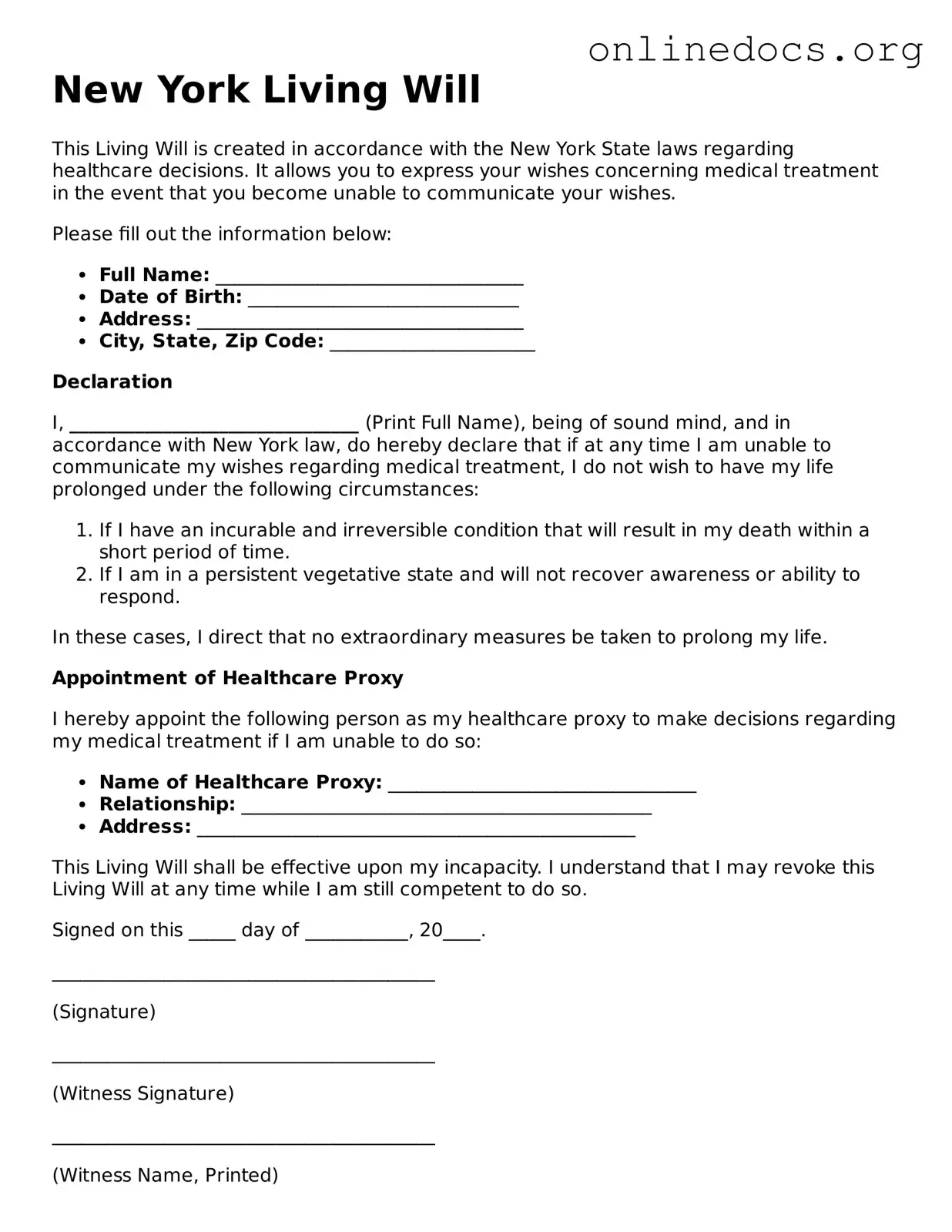Filling out a New York Living Will form is a crucial step in ensuring that your healthcare preferences are honored when you can no longer communicate them yourself. However, many individuals make common mistakes that can lead to confusion or even conflict among loved ones and healthcare providers. Understanding these pitfalls can help you create a more effective and clear Living Will.
One frequent error occurs when individuals fail to specify their wishes clearly. Ambiguity can lead to misunderstandings about the type of medical treatment one desires. For instance, stating a preference for "comfort care" without detailing what that entails can leave room for interpretation. Instead, be explicit about your choices regarding life-sustaining treatments, such as resuscitation or mechanical ventilation.
Another mistake is neglecting to discuss the Living Will with family members and healthcare proxies. While the document serves as a legal directive, it is equally important that your loved ones understand your wishes. Open conversations can prevent emotional turmoil and ensure that everyone is on the same page when difficult decisions arise.
Many people also overlook the importance of updating their Living Will. Life circumstances change, and so do personal beliefs and medical conditions. Failing to revisit and revise your Living Will can lead to situations where outdated preferences are followed. Regularly reviewing your document ensures it reflects your current desires.
Additionally, some individuals mistakenly believe that a Living Will is sufficient on its own. In New York, it is essential to have a designated healthcare proxy alongside your Living Will. This person will make decisions on your behalf if you are unable to do so. Without appointing someone, your wishes may not be honored as intended.
Finally, a common oversight is not signing the document properly. In New York, a Living Will must be signed and dated in the presence of at least one witness who is not a family member or someone who would inherit from your estate. Failing to follow these guidelines can render the document invalid, leaving your healthcare decisions in limbo.
By avoiding these mistakes, you can create a Living Will that truly reflects your wishes and provides clarity for your loved ones during challenging times. Take the time to ensure that your preferences are documented, discussed, and legally valid, allowing you to maintain control over your healthcare choices.
